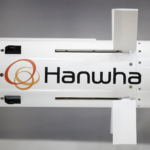Introduction
Bangladesh has made significant progress in the digital revolution of the twenty-first century. To ensure that inhabitants, particularly the most vulnerable, have easy access to public services, the government established a nationwide strategy to create a “Digital Bangladesh.” The current study seeks to investigate how Sheikh Hasina’s vision and leadership have contributed to the successful implementation of Digital Bangladesh and the nation’s continuing transition into Smart Bangladesh.
Sheikh Hasina’s Vision for Digital Bangladesh.
Bangladesh’s prime leader, Sheikh Hasina, used the slogan “Digital Bangladesh” in 2008 to campaign for a thorough digitalization effort. Her objective was to incorporate ICT into the governance and service delivery systems of the public and private sectors. Bangladesh bucked all forecasts by becoming a tech-enabled middle-income economy thirteen years later, in 2021 (Daily Sun, 2023).
Transforming to Smart Bangladesh
Sheikh Hasina vowed in 2022 that her administration will convert Bangladesh into a “Smart Bangladesh” by that year, with the goal of making the country a developed nation by 2041. The four pillars on which the government has created Smart Bangladesh are smart citizens, smart economy, smart government, and smart society. In the short term, the key goals of Smart Bangladesh, which encompasses the whole spectrum of a knowledge-based digital economy, are e-governance and service delivery via ICT use. The government intends to have transformed the country from a digital to a Smart Bangladesh by 2041. Every member of the public will be digitally adept, and the entire society will be technologically knowledgeable. The government is pushing for broad digital literacy programs and aims to educate people with a “digital first” mindset. The people will use digital technologies such as cellphones and the internet to access information. The government is strengthening the four pillars of Smart Bangladesh (Ahmed, 2023).
Four Core Elements of Smart Bangladesh
The government is bolstering the four pillars via Smart Bangladesh. The four pillars are smart economy, smart system, smart society, and smart citizen. The government is aiming to establish high-tech parks in twelve different sections of the country with assistance from the Indian government and a loan from Exim Bank of India. The government is also establishing a Digital Service Employment and Training Center for Bangladesh-India at six different locations across the country. To achieve the goal of Smart Bangladesh by 2041, the government must develop a thorough master plan through extensive discussions with relevant stakeholders. To make Smart Bangladesh a reality, the public and private sectors must work together. Smart Bangladesh might be realized if individuals in Bangladesh begin to act properly and intelligently toward one another (TBS News, 2023).
Combating the Digital Divide
Bangladesh has already experienced the speed with which technology can revolutionize the world, but caution is required. While technology has helped to national growth, unequal access to digital resources has exacerbated inequality. Long-standing structural imbalances are mirrored in and exacerbated by the digital divide, so even if disadvantaged groups stand to benefit the most from digital technologies, they are also the least likely to have access to them. Bangladesh should learn from the digital divide and undertake the following three critical policy measures:
Collaborations between the public and commercial sectors to bring affordable, high-speed broadband to homes and businesses worldwide. Until such access is obtained, the National Helpline 333 and Bangladesh’s 9,000 digital service provider centers can act as the “poor” person’s portal to the digital world (Chowdhury, 2023).
The government must improve everyone’s access to digital services, particularly in fast-growing economies such as Bangladesh. The government’s objective should be to provide equal opportunities for all individuals and to narrow the digital divide.
Smart Bangladesh must promote the principle of equal growth. The government must ensure that everyone has an equal chance to exercise their right to digital progress. The government’s objective should be to establish equal opportunity for all individuals and to narrow the digital divide (Kabir, 2023).
Bangladesh’s government’s objective has been to promote digital equality and close the digital divide. The government’s national goal is to build a “Digital Bangladesh” in which citizens, particularly the most disadvantaged, may conveniently access government services. Governments and business leaders will need to reconsider their strategies as a result of the convergence of digitization and globalization. To ensure that the advantages of long-term digital growth are distributed equally among all citizens, the government must take actions to reduce social inequality. To make Smart Bangladesh a reality, the public and private sectors must work together. Smart Bangladesh may be realized if residents take responsibility for their actions and learnt to conduct properly (Chowdhury, 2023).
The Role of Technology in Transformational Change
Because technology is a vital component of transformational change, Bangladesh may use a variety of technologies to achieve its goals for sustainable development. Bangladesh might be transformed by using the following technologies:
Digital resources: Using digital technologies like as social media, mobile phones, and the internet, it is feasible to expand access to healthcare, education, and other important services. The government may use digital technology in two ways: e-governance and service delivery through ICT (Kabir, 2023).
Artificial intelligence (AI) and machine learning (ML): They enable the prediction of trends and the development of cutting-edge new products. These technologies have the potential to boost industry efficiency and provide new job possibilities.
Data Analytics: With the use of data analytics, it is possible to unlock the value of operational, customer, and market data. This technology makes it feasible to improve decision-making methods as well as generate new corporate concepts (Ahmed, 2023).
Biometric Identification: For identification, biometric identification technologies such as fingerprint scanning can be used. Using this technology, fraud can be reduced and security may be increased.
Transformational change aims in Bangladesh may be addressed via the use of these technologies. While AI and ML may be used to raise industrial efficiency and provide new job opportunities, digital technologies, for example, may be utilized to improve access to healthcare and education. Data analytics may help to improve decision-making processes and create new business models. Biometric identification technologies may be used to reduce fraud and boost security. The government must ensure that everyone has an equal chance to exercise their right to digital progress. The government’s objective should be to establish equal opportunity for all individuals and to narrow the digital divide. The public and private sectors should work together to ensure a more complete transition. The Benefits of Transformational Change in Bangladesh.
Although Bangladesh has made enormous gains in its economy and society over the previous many decades, transformational change is still necessary to achieve sustainable development. Bangladesh stands to benefit much from transformative change in terms of economic, social, and environmental progress. Improved infrastructure and transportation systems, more foreign investment and trade opportunities, increased industrial efficiency and competitiveness, and the creation of new job opportunities are just a few of the economic benefits of transformational change (Berg et al, 2021).
Improving access to healthcare, education, and other important services, reducing poverty and inequality, empowering disadvantaged and vulnerable groups, and developing a better sense of community are just a few of the social benefits of transformational change. Reducing carbon emissions and environmental degradation, supporting sustainable development practices, and improving public health and well-being are just a few of the environmental benefits of transformational change.
These benefits may be obtained by fostering equitable growth, expanding access to digital services, and incorporating policies, initiatives, and programs into national strategy. The public and private sectors should work together to ensure a more complete transition. Transformational change would need a new vision, new objectives, a cultural shift, and new operational procedures (Berg et al, 2021). The government must ensure that all citizens benefit fairly from the outcomes of long-term digital growth. The government’s objective should be to establish equal opportunity for all individuals and to narrow the digital divide.
Conclusion
Under Sheikh Hasina’s leadership, Bangladesh has moved from a vision of “Digital Bangladesh” to the goal of becoming a “Smart Bangladesh,” demonstrating the transformative potential of technology and its ability to drive social, economic, and environmental change. Even while there has been significant progress, it is still critical to ensure that everyone benefits from this transformation, reducing the digital divide and fostering equitable growth. To realize the aim of a Smart Bangladesh and ensure the country’s future, collaboration between the public and private sectors, investments in vital technologies, and a commitment to equal opportunities for all inhabitants are required.
References
Ahmed, S. (2023). What is Smart Bangladesh: Pillars, Challenges, Opportunities & Future of Smart Bangladesh. Bishleshon. https://www.bishleshon.com/english/what-is-smart-bangladesh-pillers-challenges-opportunities-future-of-smart-bangladesh/
Berg, A., Chhaparia, H., Hedrich, S., & Magnus, K. H. (2021). What’s next for Bangladesh’s garment industry, after a decade of growth. https://www.iafnet.com/2016_01_22/wp-content/uploads/2021/06/Whats-next-for-Bangladeshs-garment-industry_McKinsey-Highlighted.pdf
Chowdhury, A. (2023, September 27). Smart Bangladesh is prosperous, equitable and caring. Whiteboard Magazine. Retrieved from https://whiteboardmagazine.com/3854/smart-bangladesh-is-prosperous-equitable-and-caring/
Daily Sun. (2023, October 10). Transition from digital to smart Bangladesh. Retrieved from https://www.daily-sun.com/printversion/details/665516/Transition-from-digital-to-smart-Bangladesh
Kabir, R. (2023, February 22). Road to Smart Bangladesh. The Daily Star. https://www.thedailystar.net/business/economy/news/road-smart-bangladesh-3254121
TBS News. (2023, September 28). Govt stresses on four pillars to build Smart Bangladesh: Palak. Retrieved from https://www.tbsnews.net/bangladesh/govt-stresses-four-pillars-build-smart-bangladesh-palak-689746







